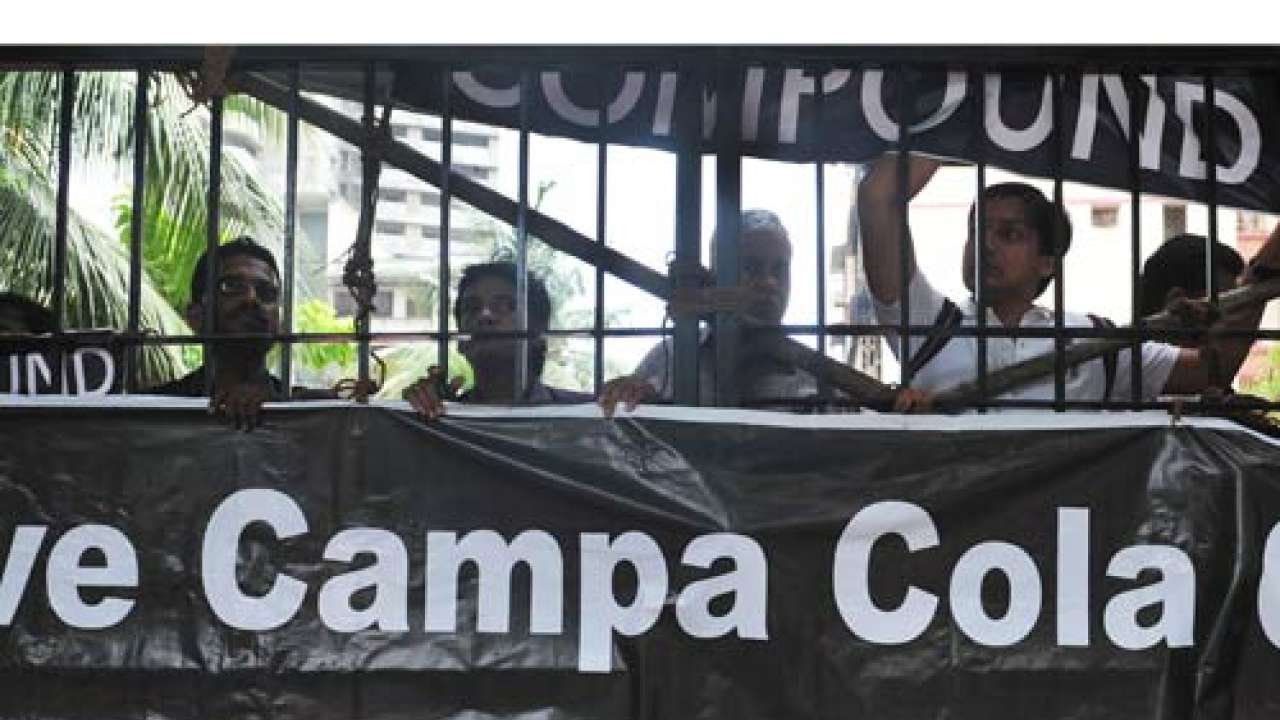
The high drama at the Campa Cola complex has the tired air of a rerun. Given mixed political messages, it is unlikely Brihanmumbai Municipal Corporation (BMC) officials will be any more successful in getting past resolute residents to deal with the unauthorised flats than they were last time around. With the Maharashtra assembly elections looming, both the Congress-NCP and BJP-Shiv Sena alliances are playing a careful game of keep away. Thus, even as Maharashtra Chief Minister Prithviraj Chavan and Union urban development minister Venkaiah Naidu shelter behind the Supreme Court’s order for the demolition of the flats, NCP and BJP leaders on site back the residents. The fact that the latter, along with the Shiv Sena, has controlled the BMC for almost two decades now adds a final lashing of irony. The entire tangle is an apt representation of the state of housing in Mumbai — crippled by ineptitude and corruption on the part of the municipal corporation and politicians for which consumers must pay the price as the Campa Cola residents are being asked to do.
The apex court’s verdict boils down to caveat emptor. It makes for a fine principle in theory; in practice, it is meaningless when it comes to a real estate sector like Mumbai’s. Due diligence on the part of the buyer requires a market where observing regulations is the norm and transactional proceedings, paperwork and the relevant authorisations take place within a structured framework. The Campa Cola case shows a very different reality. The complex is built on land owned by the BMC and leased to Pure Drinks Ltd which sold development rights to three builders. The additional floors that violated the floor space index applicable at the time didn’t come up overnight; they were constructed from 1984 to 1989, a period during which the builders received multiple stop work notices that they ignored. In short, the illegal flats were built on BMC land violating BMC regulations in a process the BMC was well aware of but took no concrete steps to stop.
It is possible some of the buyers were aware of the exact situation, certainly. But given the circumstances, it is equally plausible that they were not. The real estate sector in Maharashtra as a whole runs on a jugaad principle; it is understood that permissions are negotiable and municipal corporations are always open for business. The severe shortage of affordable housing further cuts into buyer agency. As a result, there are 56,000 illegal buildings in Mumbai, as perthe BMC. Sister city Thane has over 1,100 illegal or irregular buildings while the Pimpri-Chinchwad-Pune metro region has anywhere from 65,000 to 80,000 such structures.
Demolition on such a scale is obviously impossible. Chavan has presented cluster redevelopment as an option, but the present policy has its own problems, ranging from the fact that consent from only 70 per cent of the landlords is required for the state’s abysmal record when it comes to relocating residents. Another option on the table — prompted in part by the Campa Cola case — is regularisation of illegal structures from the gram panchayat to municipal corporation levels. Given the sheer number of such buildings, this is both inevitable and necessary; other states such as Gujarat, Himachal Pradesh and Karnataka have gone down the same route. But whatever the contours of the broader solution, the first step must be breaking the builder-corporation-politician nexus that has created the problem. And it can start with penalising the builders and the BMC personnel responsible for the Campa Cola mess, not the residents.